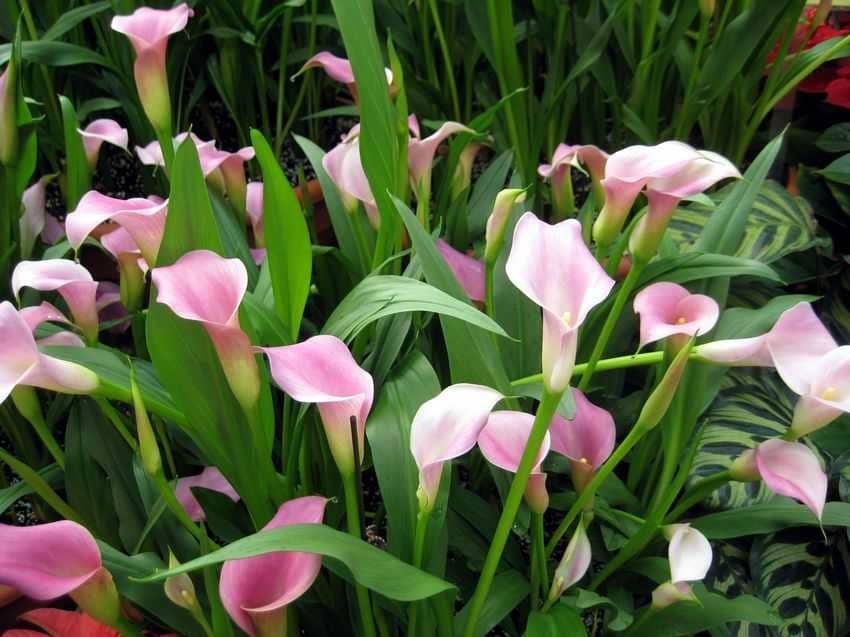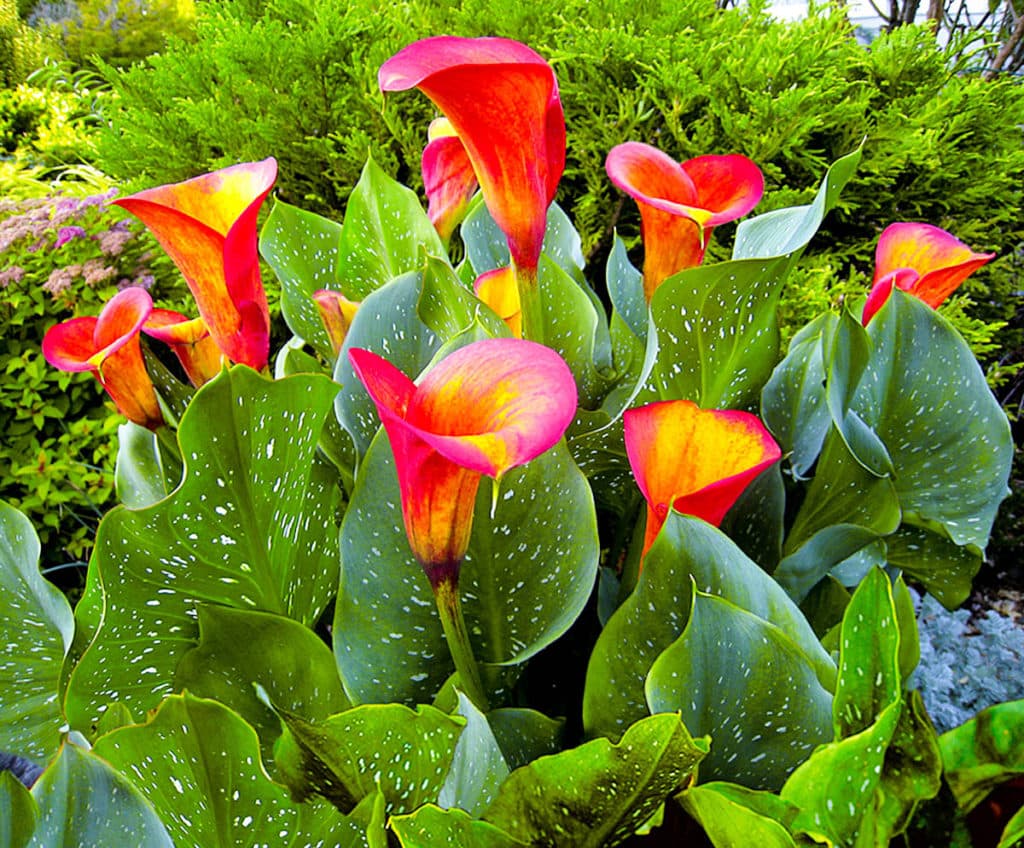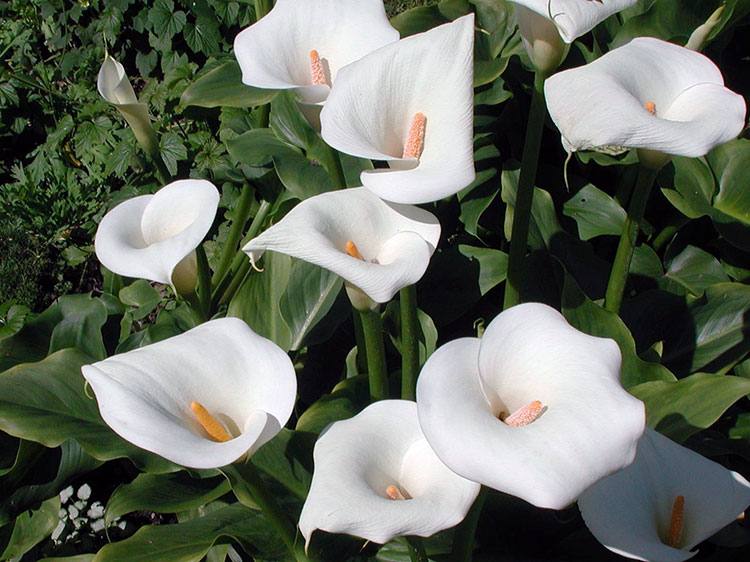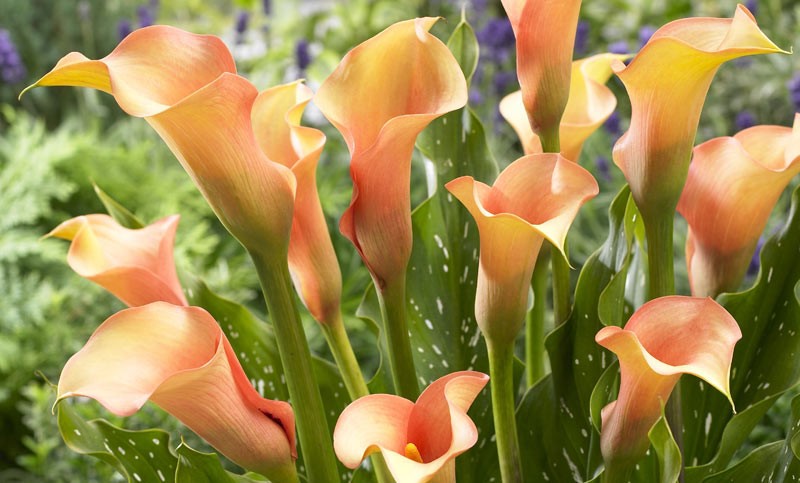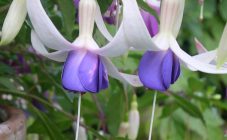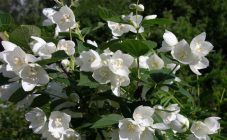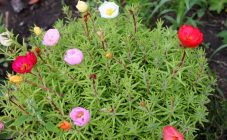Content:
Many gardeners know what calla flowers look like; growing this plant in the garden has some features. This culture is finicky and requires some care. There are several varieties of this plant, varieties mainly differ in the colors of the buds. The article provides a detailed description of the flower, as well as the features of its cultivation in the open field.
Cultural history
Gardeners often call the culture calla, since in Russia a variety with white buds is grown more often. The flower belongs to the Aroid family, the official name is Zantedeschia. It is this species that has only a few varieties; in the botanical literature, you can see a description of only 6 of all. All of them are perennials. Often gardeners plant them in the country and in the garden. The plant is picky and loves a lot of moisture. In the wild, it can be seen in swampy areas or along the banks of water bodies. Calla root is directly in the water.
Calla is a flower in the garden that grows quickly if given proper care. Breeding this plant will be a little difficult in Siberia and other cold regions.
The foliage of the flower is located on elongated petioles, the size of which is enormous. Their color can be green or brighter if there are spots of cream and white shades on the deciduous part. The root of the plant is branched, while it is quite strong and powerful. So, the Ethiopian variety has a branched root, and Eliotta has tubers.
Plant characteristic
The genus of the plant is named after one of the legendary botanists who lived in Italy - F. Zantedeskia. There are very few calla varieties, but they are all similar to each other, the only difference is the size of the flower or leaves, as well as the color.
The plant is a small bush. The leaves are heart-shaped, wide enough and can reach 25 cm in length. Their width is no more than 20 cm. The leaves are green, the Eliot variety has white stripes and spots on the surface. The Remann variety has smooth green leaves, but they are narrower. During the budding period, calla lilies appear with a veil about 15 cm long.Their colors vary from light to darkest, sometimes almost black buds are found.
Many gardeners are interested in bicolor plants. This type of bulbous calla lilies after flowering requires a special approach. They need to be provided with a dry and cool place to rest during the winter. Such plants bloom for a long time, flowers retain their beauty for 4 to 6 weeks. By the end of summer, they can bloom a second time, if you follow the rules of flower agricultural technology.
Description of varieties
Most of the varieties listed below were bred from Ethiopian Zantedeskia. Also, Calla Elliottiana and Calla Rehmannii were taken as a basis, from which unusual plants with a bright color were obtained. These calla lilies can be grown not only in the garden, but also at home. Some of the varieties presented are intended only for home breeding.
The most popular are:
- Black Beauty. The bud has a rich dark shade, close to ink color. The ear is dark with a light border.
- Anneke. The petals are purple in color. There is also a variety with a dark raspberry color.The ear is yellow.
- Albomaculata. The bedspread has a snow-white color, and the ear is colored deep yellow.
- Akela. The flower is lilac, the border is white.
- Black Magic. The petal of the variety is yellow, there is a large dark spot inside.
- Black Forest. It is distinguished by a lilac blanket, the ear is black in color.
- Captain Rosette. The petal is colored in a light pink shade.
- Captain Chelse. The flower along the edge has a rich yellow color, the main bedspread has a red tint.
- Mango. The petal is colored red, there are yellow and orange streaks on it.
- Bolero. It stands out with a rich crimson petal.
- Magestic Red. The name was given for a reason, the plant has a flower of a bright red hue.
- Cherry Kiss. The base is white and the border is pink.
- Red Alert. The bedspread itself is red, and there is a slight yellow tint around the edges.
- Hot Shot. The petal is yellow-orange in color.
- Florex Gold. The bud is colored yellow.
Calla flower: garden care
If a gardener wants to grow calla flowers, planting and caring for the garden properly will play a significant role in the end result. Only then will the zantedeschia bloom beautifully for several weeks. To get a flowering plant outdoors, the crop should be planted in May when warm days come. Before transplanting the tubers into the ground, they are well inspected for rot. If one is found, it is cut off, and the cut points are smeared with brilliant green. It is advisable to place the tubers in a weak solution of potassium permanganate for 30 minutes.
The site where the plant is planned to be planted should be dug up and fertilized. For this, it is recommended to use mineral dressing. About 30 g of top dressing is used per 1 m². Then you can plant the crop in the ground. Each onion is placed to a depth of no more than 10 cm, a gap of 40 cm is made between the plants. After planting, the soil is watered abundantly with water.
For the next 15 days, there is no need to water, since there will be enough moisture for 2 weeks. The first shoots do not appear soon, it usually takes from 2 weeks to 1 month. When the crop reaches a height of 5-7 cm, watering is carried out as needed. You will not have to apply fertilizer after planting, since what was added during planting will be enough.
Features of growing in the Moscow region, Siberia
Winter in these areas is severe enough that plants cannot tolerate it on their own outside. You will have to dig up the tubers and store them in a warmer place. Alternatively, a cellar, cold closet, or basement will do.
Diseases and pests
This plant is easily susceptible to certain types of diseases, and it can also be affected by pests. The gardener is obliged to monitor the condition of the flower in order to notice dangerous changes in time. Often the culture is affected by late blight. This disease develops due to too high humidity, which occurs with excessive watering.
There are also other diseases that affect the flower:
- Phylostictosis. This is a fungal disease that causes brown spots on the stems. Also these spots appear on bedspreads and deciduous parts. You can overcome the disease by removing the affected parts, as well as by treating with fungicides.
- Blackleg. It manifests itself as yellowing of the leaves, after which the root system begins to rot and the plant dies. It is impossible to cure the bush.
Of the pests, the plant is often attacked by spider mites, mealybugs, apple aphids and thrips. These insects damage the foliage of the calla lilies. They are also annoyed by nematodes, which settle in the root of the plant, affecting it. This leads to the fact that the growth of the culture slows down. To combat parasites, the plant can be treated with insecticidal agents.
Calla lilies are beautiful flowers, but they require close attention to their care.According to experts, it is better to grow the plant in an open area, which is shaded by trees in the heat. For planting, you can choose any variety, given its characteristics. You can plant culture not only in the garden, it will even decorate the window sill of the apartment. In any case, this is a stunning beauty, impressive in its size.
